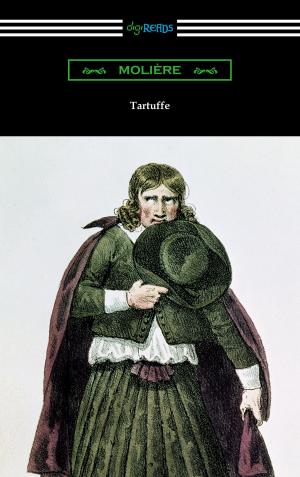| Author: | Euripides | ISBN: | 9781420944877 |
| Publisher: | Neeland Media LLC | Publication: | December 15, 2009 |
| Imprint: | Digireads.com Publishing | Language: | English |
| Author: | Euripides |
| ISBN: | 9781420944877 |
| Publisher: | Neeland Media LLC |
| Publication: | December 15, 2009 |
| Imprint: | Digireads.com Publishing |
| Language: | English |
Euripides turned to playwriting at a young age, achieving his first victory in the dramatic competitions of the Athenian City Dionysia in 441 b.c.e. He would be awarded this honor three more times in his life, and once more posthumously. His plays are often ironic, pessimistic, and display radical rejection of classical decorum and rules. Together with Aeschylus and Sophocles, Euripides would provide the canon of Greek tragedy and thereby lay the foundation of Western theatre. "The Phoenician Maidens" was written between 411 and 409 b.c.e., and is named for the play's Chorus, which is composed of Phoenician women who are accidentally trapped in Thebes by war. The play was very popular in the later Greek schools for its action and graphic descriptions. It tells the story of Polynices and Eteocles, the sons of Oedipus, and their fight for the crown of Thebes.
Euripides turned to playwriting at a young age, achieving his first victory in the dramatic competitions of the Athenian City Dionysia in 441 b.c.e. He would be awarded this honor three more times in his life, and once more posthumously. His plays are often ironic, pessimistic, and display radical rejection of classical decorum and rules. Together with Aeschylus and Sophocles, Euripides would provide the canon of Greek tragedy and thereby lay the foundation of Western theatre. "The Phoenician Maidens" was written between 411 and 409 b.c.e., and is named for the play's Chorus, which is composed of Phoenician women who are accidentally trapped in Thebes by war. The play was very popular in the later Greek schools for its action and graphic descriptions. It tells the story of Polynices and Eteocles, the sons of Oedipus, and their fight for the crown of Thebes.












![Cover of the book Dante's Purgatorio (The Divine Comedy, Volume II, Purgatory) [Translated by Henry Wadsworth Longfellow with an Introduction by William Warren Vernon] by Euripides](https://www.kuoky.com/images/2017/may/300x300/9781420954968-2oRA_300x.jpg)


